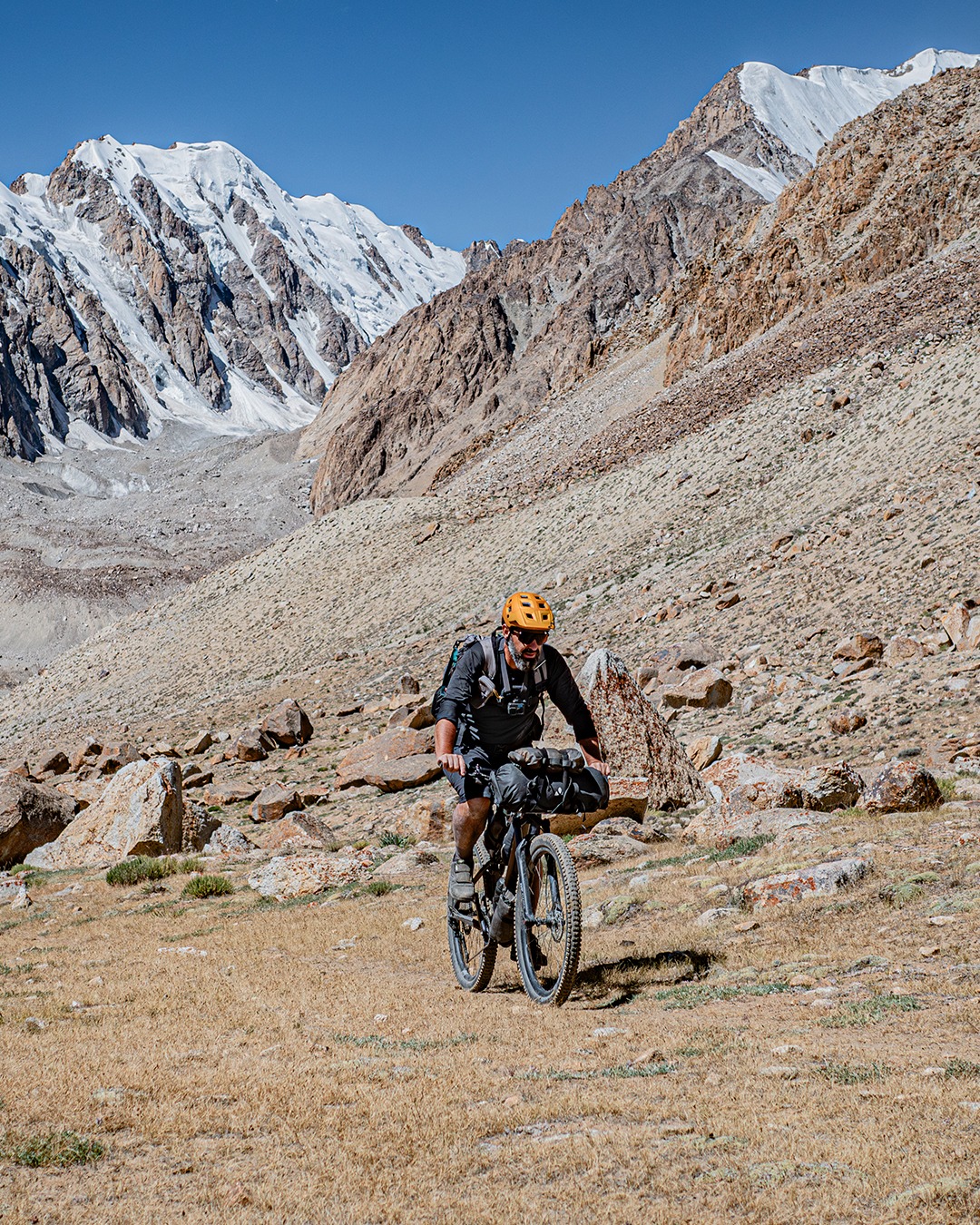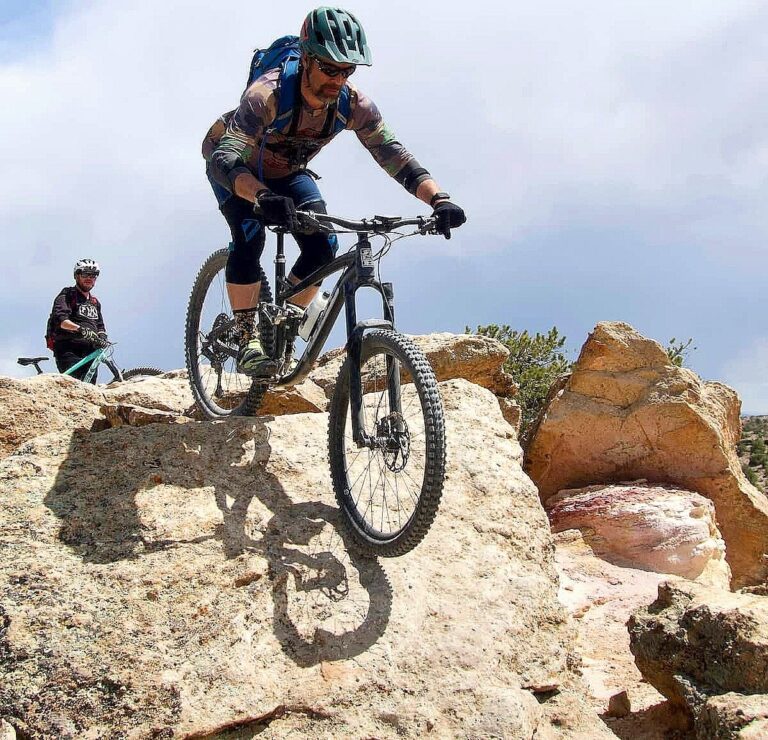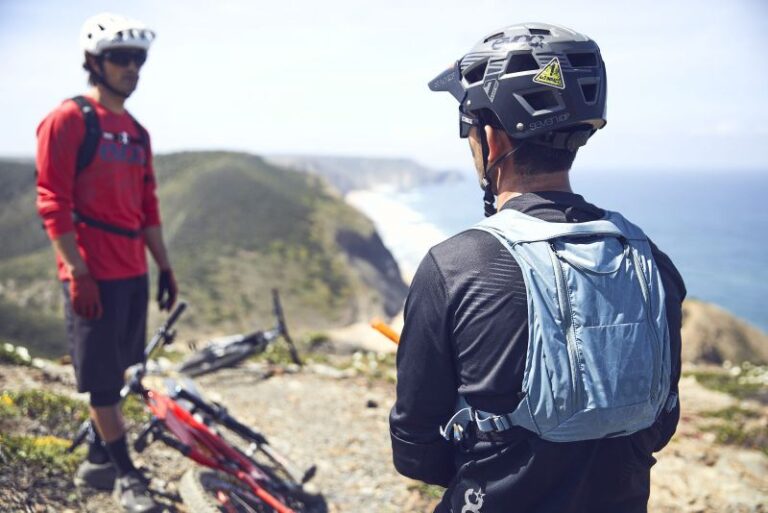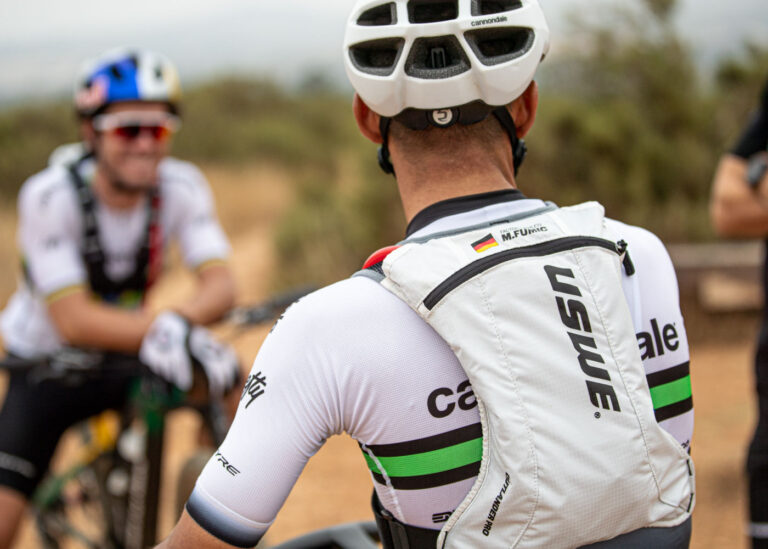The Gravel Biker’s Guide to Using Hydration Packs for Gravel Biking

Key Point Summary of Using Hydration Packs for Gravel Biking:
- Hydration Packs vs. Water Bottles: Hydration packs offer convenience and larger water capacity over traditional water bottles, making them ideal for longer, more remote gravel rides.
- Capacity and Comfort: Choose a hydration pack with a capacity that suits your ride length and conditions, and prioritize features that enhance comfort, such as adjustable straps and breathable materials.
- Easy Hydration on the Go: With a hydration pack, drinking is hands-free and can be done on the move, helping maintain hydration without breaking rhythm.
- Maintenance and Care: Regular cleaning and drying are crucial to prevent mold and bacteria growth in the reservoir and tubes.
- Packing Essentials: Besides water, hydration packs can carry essential tools, snacks, and layers, making them a versatile choice for adventure cycling.
As someone who’s spent countless hours pedaling on various terrains, I’ve had my fair share of experiences with different hydration strategies. Early on, I was a staunch supporter of water bottles. They were simple, easily accessible, and didn’t require much maintenance. However, as my rides grew longer and ventured further into remote gravel paths, the limitations became apparent. I remember a particular ride where I underestimated the heat and ran out of water, miles away from any refill point. That day, I learned the hard way that when it comes to adventure cycling, especially gravel biking, preparation is key, and a hydration pack is your best ally.
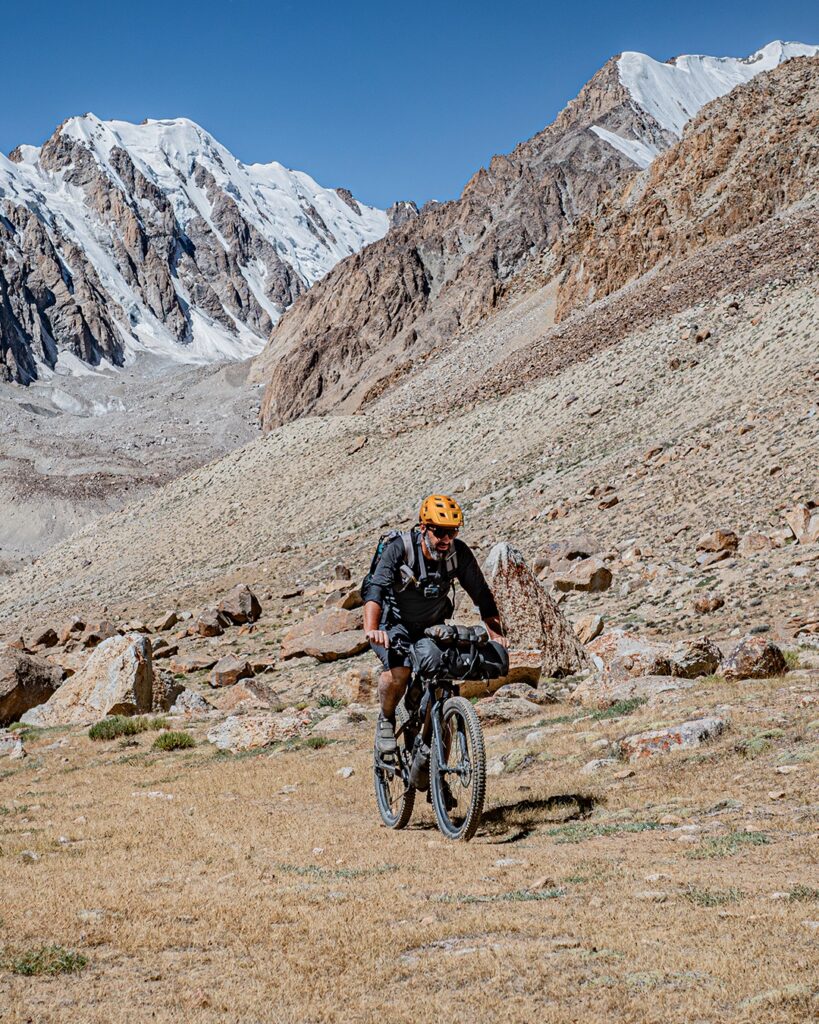
Hydration Packs: A Game Changer
Switching to a hydration pack was a revelation. Suddenly, I had access to two or more liters of water without needing to stop or fumble with bottles. Drinking on the go became second nature, keeping me hydrated and focused on the trail ahead. The convenience of a hydration pack cannot be overstated for gravel biking, where terrain can be unpredictable, and stopping might not always be an option.
Choosing the Right Pack
Selecting the right hydration pack involves balancing capacity with comfort. For shorter rides, a smaller pack with a 1.5-liter reservoir might suffice. But for those day-long adventures or races, I lean towards a 2 to 3-liter pack. Remember, it’s not just about water; you’ll want space for essentials like tools, a spare tube, and nutrition. Comfort is crucial, too. Look for packs with adjustable straps, good weight distribution, and breathable materials to avoid turning your back into a sweat lodge.
From Personal Mishaps to Pro Tips
I’ve had my share of mishaps, from leaky reservoirs to forgotten spare tubes, each teaching me valuable lessons. One key takeaway is the importance of routine maintenance. Cleaning your hydration pack might seem like a chore, but trust me, nothing’s worse than getting a mouthful of moldy water mid-ride. Make it a habit to clean and dry your pack thoroughly after each use.
Another tip is to always pack strategically. Early on, I’d throw in my tools and snacks haphazardly, only to waste time digging for them when needed. Now, I use ziplock bags and small pouches to organize my gear, ensuring everything is easily accessible.
Hydration Tips for the Trail
Staying properly hydrated starts before you even hit the trail. I aim to drink plenty of water the day before a big ride, ensuring I’m starting off well-hydrated. During the ride, I sip regularly, not just when I’m thirsty. Thirst is a late indicator of dehydration, so regular, consistent sips are key to staying ahead.
Temperature plays a huge role in hydration needs. On hot days, I add electrolyte tabs to my water to replace salts lost through sweat. In cooler weather, it’s easy to overlook hydration, but your body still needs fluids, so I keep sipping, albeit less frequently than on those sweltering summer rides.
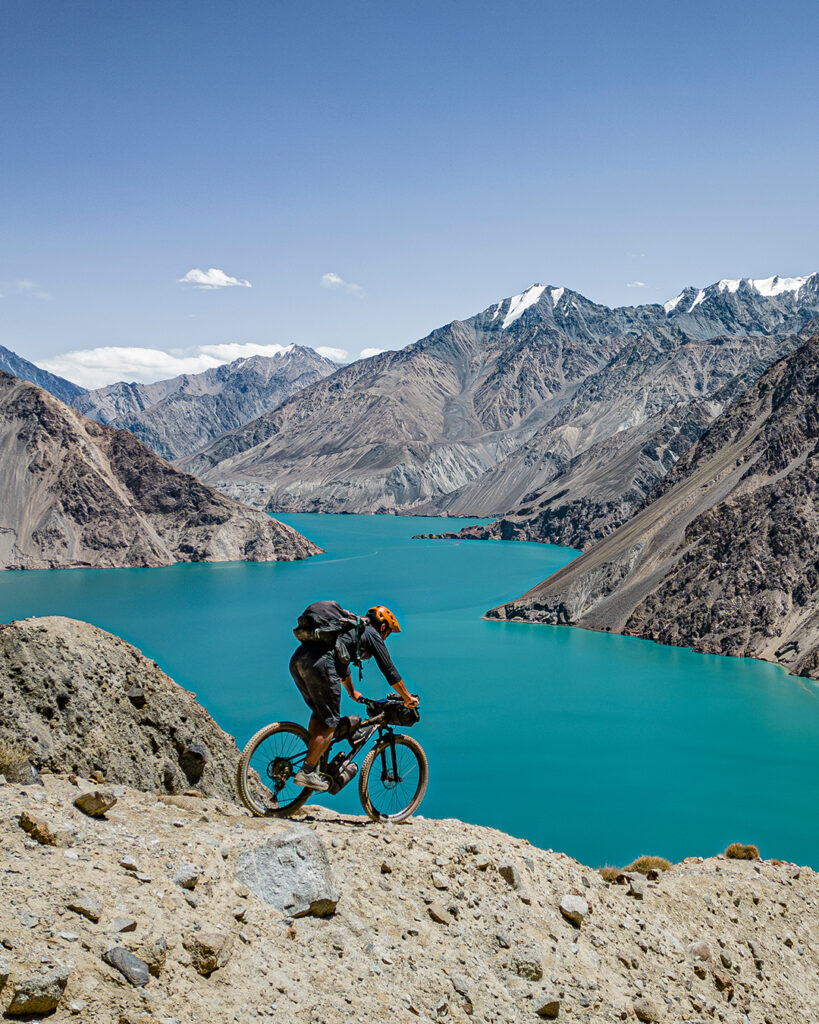
The Social Aspect
One aspect of hydration packs I hadn’t anticipated was how they fit into the social fabric of group rides. Sharing water became easier, and I found myself becoming a bit of a mobile aid station for riders who’d underestimated their needs. It’s a small thing, but in the spirit of cycling camaraderie, it’s a role I relish.
Concluding Thoughts
Choosing the best hydration pack for gravel biking involves considering factors like storage capacity, fit, comfort, and durability. Here are some top hydration packs that have earned high marks from cyclists for their performance on gravel rides:
- CamelBak Chase Bike Vest – Designed specifically with bikers in mind, the Chase Bike Vest offers a balanced and stable fit, making it ideal for the dynamic movements of gravel biking. Its 1.5-liter hydration capacity is complemented by multiple storage pockets for tools, snacks, and an extra layer.
- Osprey Raptor 14 – The Raptor 14 is favored for its ample storage space, including a 2.5-liter hydration reservoir, integrated tool roll, and various compartments for organizing gear. Its AirScape back panel promotes ventilation, a boon on long, hot rides.
- Evoc Hip Pack Race 3L – For those who prefer not to carry a pack on their back, the Evoc Hip Pack offers a comfortable alternative with a 1.5-liter hydration bladder and enough space for essentials, all while providing excellent ventilation and reducing back sweat.
- Deuter Race Air – With a lightweight design and a 3-liter hydration system, the Race Air is known for its excellent air circulation system that reduces back sweat. It also offers a snug fit and enough space for tools, snacks, and a lightweight jacket.
- USWE Outlander 4 – This pack is lauded for its “No Dancing Monkey” harness system, which ensures the pack stays put on rough terrain without sacrificing comfort. It includes a 3-liter hydration bladder and is designed for easy refill and maintenance.
- Hydrapak Expedition 8L – For ultra-distance gravel biking where water sources are scarce, the Expedition offers an 8-liter capacity. It’s more of a flexible water storage solution than a traditional pack but can be carried in a variety of ways and is durable enough for rough conditions.

When selecting a hydration pack for gravel biking, consider the length and remoteness of your typical rides, how much gear you like to carry, and personal comfort preferences. Each of these packs has its unique strengths, making them well-suited to the diverse needs of gravel cyclists.
Switching to a hydration pack has fundamentally changed how I approach gravel biking. It’s not just about having enough water; it’s about being prepared for whatever the trail throws at you, from unexpected detours to mechanical issues. The freedom to drink without stopping, the capacity to carry essentials beyond just water, and the peace of mind of knowing you’re well-prepared make hydration packs an indispensable tool in the gravel biker’s arsenal.
Whether you’re tackling your first gravel ride or gearing up for your next big adventure, consider how a hydration pack might enhance your experience. Remember, staying hydrated is about more than just quenching thirst; it’s about ensuring you’re at your best, mile after gravelly mile.
John
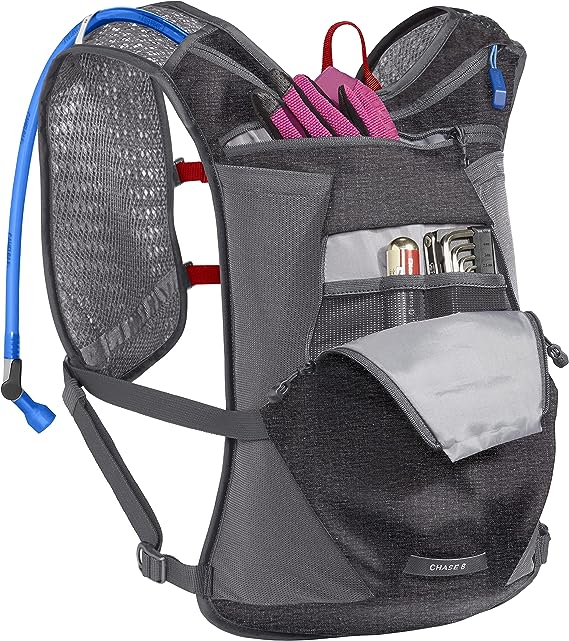
FAQ
What should I carry on my gravel bike?
On your gravel bike, carry a spare tube, tire levers, a multi-tool, a patch kit, a pump or CO2 inflator, water or a hydration pack, snacks, and a phone or GPS device for navigation.
Do I really need a hydration pack?
A hydration pack is not always necessary but is highly recommended for longer rides, hot weather, or remote areas where access to water is limited.
What distance do you need a hydration pack?
You might need a hydration pack for rides longer than 2 hours, especially in conditions where you’ll sweat more or won’t have access to refill points.
